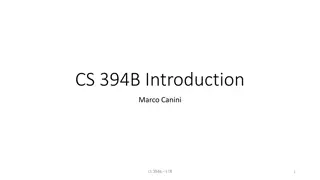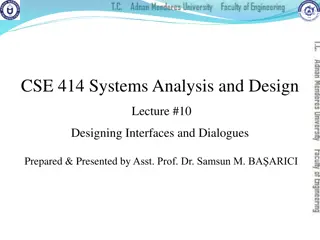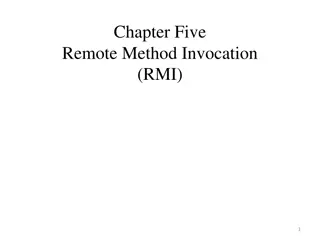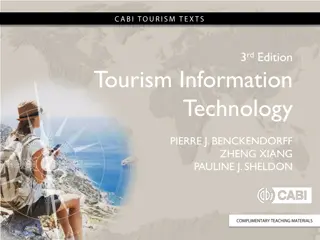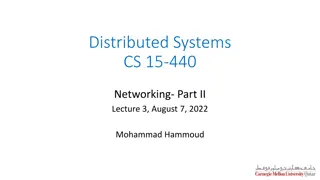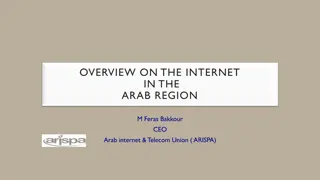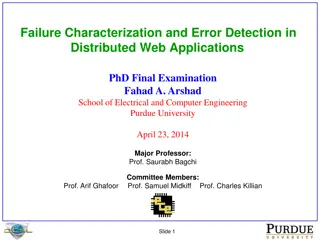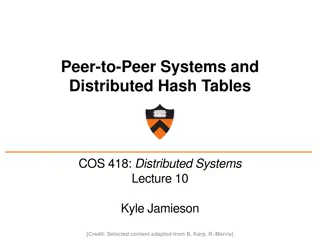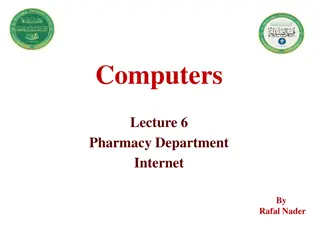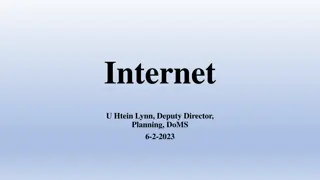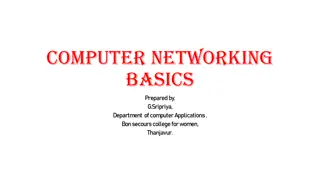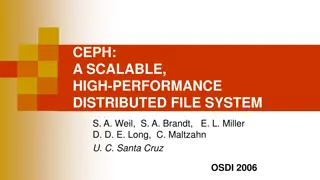Designing Distributed and Internet Systems
Learn about the design considerations for distributed and internet systems, including file server versus client/server environments, cloud computing trends, internet standards, and system development life cycle. Explore designing systems for local area networks (LANs) and the process of creating distributed systems to ensure reliability, availability, and performance.
Download Presentation

Please find below an Image/Link to download the presentation.
The content on the website is provided AS IS for your information and personal use only. It may not be sold, licensed, or shared on other websites without obtaining consent from the author. Download presentation by click this link. If you encounter any issues during the download, it is possible that the publisher has removed the file from their server.
E N D
Presentation Transcript
CSE 414 Systems Analysis and Design Lecture #11 Designing Distributed and Internet Systems Prepared & Presented byAsst. Prof. Dr. Samsun M. BA ARICI
Learning Objectives Distinguish between file server and client/server environments and contrast how each is used in a LAN. Describe cloud computing and other current trends that help organizations address ID infrastructure- related challenges. Describe standards shaping the design of Internet- based systems, options for ensuring Internet design consistency, site management issues influencing customer loyalty, trustworthiness, and security. Lecture #11 Designing Distributed and Internet Systems 2
Designing Distributed and Internet Systems FIGURE 12-1 Systems development life cycle (SDLC) Lecture #11 Designing Distributed and Internet Systems 3
The Process of Designing Distributed and Internet Systems This process is similar to designing single-location systems. Due to multi-location deployment, numerous design issues must be considered. There is more opportunity for failure due to number of components. Main issues involve ensuring reliability, availability, survivability, performance. Lecture #11 Designing Distributed and Internet Systems 4
Deliverables and Outcome Document that consolidates system design information: Description of each site Description of data usage for each site Description of business process for each site Contrasts of alternative IS architectures for site, data and processing needs of each site Lecture #11 Designing Distributed and Internet Systems 5
Designing Systems for Local Area Networks (LANs) LAN: the cabling, hardware, and software used to connect workstations, computers, and file servers located in a confined geographical area Typically within one building or campus Lecture #11 Designing Distributed and Internet Systems 6
Designing LAN and Client/Server Systems LAN systems are either of these: LAN-based file server architecture. Client/server architecture. Lecture #11 Designing Distributed and Internet Systems 7
File Servers File server: a device that manages file operations and is shared by each client PC attached to a LAN Lecture #11 Designing Distributed and Internet Systems 8
FIGURE 12-3 File server model Lecture #11 Designing Distributed and Internet Systems 9
Limitations of File Servers Excessive data movement Entire data table must be transferred, instead of individual records. Need for powerful client workstations Each client workstation must devote memory to a full DBMS. Decentralized data control Record concurrency control, recovery, and security are complicated. Lecture #11 Designing Distributed and Internet Systems 10
Designing Systems for a Client/Server Architecture Client/server architecture: a LAN-based computing environment in which central database server or engine performs all database commands sent to it from client workstations, and application programs on each client concentrate on user interface functions Lecture #11 Designing Distributed and Internet Systems 11
File Server vs. Client/Server Lecture #11 Designing Distributed and Internet Systems 12
File Server vs. Client/Server (cont.) Lecture #11 Designing Distributed and Internet Systems 13
Designing Systems for a Client/Server Architecture Application processing is divided between client and server. Client manages the user interface. Database server is responsible for data storage and query processing. Lecture #11 Designing Distributed and Internet Systems 14
Designing Systems for a Client/Server Architecture (Cont.) Database engine: the (back-end) portion of the client/server database system running on the server that provides database processing and shared access functions Lecture #11 Designing Distributed and Internet Systems 15
Designing Systems for a Client/Server Architecture (Cont.) Client: the (front-end) portion of the client/server database system that provides the user interface and data manipulation functions Lecture #11 Designing Distributed and Internet Systems 16
Designing Systems for a Client/Server Architecture (Cont.) Application program interface (API): software building blocks that are used to ensure that common system capabilities, such as user interfaces and printing, as well as modules are standardized to facilitate data exchange between clients and servers Common API interface can be used by any kind of DBMS (MySQL, Sybase, or Oracle) Lecture #11 Designing Distributed and Internet Systems 17
Client/Server Advantages Leverages benefits of microcomputer technology Processing performed close to data source Improves response time Reduces network traffic Facilitates use of GUIs Encourages acceptance of open systems Lecture #11 Designing Distributed and Internet Systems 18
Advanced Forms of Client/Server Architectures Applications are distributed between client and server in a variety of ways. Components of an IS: Data management: functions that manage all interaction between software and files and databases (data retrieval/querying, updating, security, concurrency control, and recovery) Data presentation: functions the manage the interface between system users and the software (display and printing of forms and reports, validating system inputs) Data analysis: functions transform inputs into outputs, including simple summarization to complex mathematical modeling such as regression analysis Lecture #11 Designing Distributed and Internet Systems 19
Advanced Forms of Client/Server Architectures (Cont.) Application server: a computing server where data analysis functions primarily reside. Virtual machine: a software emulation of a physical computer system, both hardware and operating system, that allows more efficient sharing of physical hardware resources. Virtualization: the act of creating virtual (rather than physical) versions of a variety of computing capabilities including hardware platforms, operating systems, storage devices, and networks. Lecture #11 Designing Distributed and Internet Systems 20
Advanced Forms of Client/Server Architectures (Cont.) Three-tiered client/server: advanced client/server architectures in which there are three logical and distinct applications data management, presentation, and analysis that are combined to create a single information system. Middleware: a combination of hardware, software, and communication technologies that bring data management, presentation, and analysis together into a three-tiered client/server environment. Thin client: a client device designed so that most processing and data storage occur on the server. Lecture #11 Designing Distributed and Internet Systems 21
Middleware Environments Figure 12-6 Middleware ties together diverse applications and devices Lecture #11 Designing Distributed and Internet Systems 22
Advanced Forms of Client/Server Architectures (Cont.) Applications can be partitioned in a way that best fits the organizational computing need Easier customization: application code resides on application server, so change done only in one place Easier maintenance: data analysis is separate from user interface, so changing one can be done independently of the other Lecture #11 Designing Distributed and Internet Systems 23
Cloud Computing Cloud computing: provision of applications over the Internet where customers do not have to invest in the hardware and software resources needed to run and maintain the applications, but are charged on a per-use basis. Amazon Example: Amazon Web Services (AWS), Simple Storage Service (S3), Elastic Compute Cloud (EC2) Lecture #11 Designing Distributed and Internet Systems 24
Cloud Computing (Cont.) Information systems infrastructure: The hardware, software, data, facilities, human resources, and services used by organizations to support their decision making, business processes, and competitive strategy. Lecture #11 Designing Distributed and Internet Systems 25
Cloud Computing (Cont.) Utility computing: A form of on-demand computing where resources in terms of processing, data storage, or networking are rented on an as needed basis. The organization only pays for the services used. Lecture #11 Designing Distributed and Internet Systems 26
Cloud Characteristics On-Demand Self Service Rapid Elasticity Broad Network Access Resource Pooling Measured Service Lecture #11 Designing Distributed and Internet Systems 27
Service Models Infrastructure as a Service (IaaS): provides basic processing, storage, and network capabilities Platform as a Service (PaaS): customers run their own applications, using tools provided by the service provider. Software as a Service (SaaS): applications are provided by the service provider Figure 12-10 Services by SaaS, PaaS, and IaaS providers. Lecture #11 Designing Distributed and Internet Systems 28
Figure 12-11 Public clouds versus private clouds. Lecture #11 Designing Distributed and Internet Systems 29
Managing the Cloud Issues to consider when choosing service providers: Availability/Reliability no cloud service is completely immune to errors, network outages, or hardware failures Scalability this is the promise of the cloud, but there may be limits Viability you want to make sure the service provider will last over time Security, Privacy, and Compliance these are critical (e.g. Sarbanes-Oxley, HIPAA) Diversity of Offerings which provider can offer services needed now and in the future? Openness how interoperable is the service? Cost how will cloud cost compare to internal, public vs. private? Lecture #11 Designing Distributed and Internet Systems 30
Service-Oriented Architecture A software architecture Business processes broken down into individual components (services) Designed to achieve desired results for the service consumer Application Another service Person (user) Principles: Reusability Interoperability Componentization Lecture #11 Designing Distributed and Internet Systems 31
Figure 12-13 Using SOA, multiple applications can invoke multiple services. Lecture #11 Designing Distributed and Internet Systems 32
Web Services Web service: A method of communication between two electronic devices over a network. eXtensible Markup Language (XML): An Internet authoring language that allows designers to create customized tags, enabling the definition, transmission, validation, and interpretation of data between applications. JavaScript Object Notation (JSON): A lightweight data interchange approach that is relatively easy for humans to understand and for computers to generate or interpret. Lecture #11 Designing Distributed and Internet Systems 33
Web Services (Cont.) Simple Object Access Protocol (SOAP): A protocol for communicating XML data between web service applications and the operating system. Representational State Transfer (REST): A relatively simple and fast protocol for communicating JSON data between web service applications and the operating system. Lecture #11 Designing Distributed and Internet Systems 34
Designing Internet Systems Most new system development focuses on Internet- based applications (for internal processing, business- to-business, and business-to-consumer). Main design issues: standards, separating content from display, future evolution, site consistency, site management and online data management Lecture #11 Designing Distributed and Internet Systems 35
Standards Drive the Internet Internet design is simpler than client/server due to proliferation of standards. Lecture #11 Designing Distributed and Internet Systems 36
Standards Drive the Internet (Cont.) Types of Standards: Domain naming (BIND): a method for translating domain names into Internet Protocol (IP) addresses B refers to Berkeley, Ca. where first developed. Hypertext Transfer Protocol (HTTP): a communication protocol for exchanging information on the Internet Hypertext Markup Language (HTML): the standard language for representing content on the Web via command tags Lecture #11 Designing Distributed and Internet Systems 37
Site Consistency Professionalism requires a consistent look-and-feel across all pages of a Web site. Cascading Style Sheets (CSSs): a set of style rules that tells a Web browser how to present a document Lecture #11 Designing Distributed and Internet Systems 38
Site Consistency (Cont.) eXtensible Style Language (XSL): a specification for separating style from content when generating HTML documents Methods for transforming XML documents into a generic comprehensive form Methods for formatting the generic comprehensive form into a device-specific form Lecture #11 Designing Distributed and Internet Systems 39
FIGURE 12-16 Combining XML data with XSL style sheet to format content Lecture #11 Designing Distributed and Internet Systems 40
Other Site Consistency Issues Two key issues should be considered: Use unique titles. Choose words carefully. Major problem is users do not know where they are going when they follow a hyperlink. You should have link titles to explain hyperlinks. Lecture #11 Designing Distributed and Internet Systems 41
Design Issues Related to Site Management Customer Loyalty and Trustworthiness Design quality Up-front disclosure Comprehensive, correct, and current content Connected to the rest of the Web Lecture #11 Designing Distributed and Internet Systems 42
Customer Loyalty and Trustworthiness Personalization: providing Internet content to a user based upon knowledge of that customer Customization: Internet sites that allow users to customize the content and look of the site based on their personal preferences Lecture #11 Designing Distributed and Internet Systems 43
Web Pages Must Live Forever Customer Bookmarks Links from Other Sites Search Engine Referrals Old Content Adds Value System Security vs. Ease of Use Remember my password Use of cookies Lecture #11 Designing Distributed and Internet Systems 44
Website Content Management Content management system (CMS): a special type of software application for collecting, organizing, and publishing Web site content Figure 12-18 A content management system allows content from multiple sources to be stored separately from its formatting to ease Website management Lecture #11 Designing Distributed and Internet Systems 45
Electronic Commerce Application: Designing a Distributed Advertisement Server for PVF s WebStore Benefits for including advertising: Potential to increase revenue generated from the WebStore Potential to create cross-promotions and alliances with other online commerce systems Potential to provide customers with improved service when looking for additional products that accessorize PVF s product line Lecture #11 Designing Distributed and Internet Systems 46
Advertising on PVFs WebStore List of advertisement system concerns: Advertisement must be served quickly so that site performance is not affected. Advertisement must be uniform in size and resolution, so as not to disrupt the site layout. Advertisement links must not redirect the user s browser away from the WebStore. Lecture #11 Designing Distributed and Internet Systems 47
Designing the Advertising Component Transactional requirements are to Determine which advertisements apply, based on where the user is in the WebStore. Personalize the advertisement if the identity of user and preferences are known. Check for any seasonal or promotional advertisements. Log the transaction. Lecture #11 Designing Distributed and Internet Systems 48
Designing the Management Reporting Component Queries for top-management: How many women, when shopping for desks, clicked on an advertisement for lamps? How many advertisements were served to shoppers looking at filing cabinets? How many people clicked on the first advertisement they saw? How many people clicked on an advertisement and then purchased something from the WebStore? Lecture #11 Designing Distributed and Internet Systems 49
Summary Now you learned how to: Distinguish between file server and client/server environments and contrast how each is used in a LAN. Describe cloud computing and other current trends that help organizations address ID infrastructure- related challenges. Describe standards shaping the design of Internet- based systems, options for ensuring Internet design consistency, site management issues influencing customer loyalty, trustworthiness, and security. Lecture #11 Designing Distributed and Internet Systems 50



